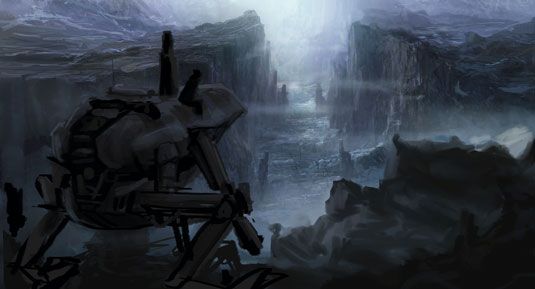Original art
Conflict, Time, Photography brings together photographers who have looked back at moments of conflict, from the seconds after a bomb is detonated to 100 years after a war has ended https://voltagebets.net/. Staged to coincide with the centenary of the First World War, this major group exhibition offers an alternative to familiar notions of war reportage and photojournalism, instead focusing on the passing of time and the unique ways that artists have used the camera to reflect on past events.
In July 2004, for the 25th anniversary of the overthrow of Somoza, Susan returned to Nicaragua with nineteen mural-sized images of her photographs from 1978-1979, collaborating with local communities to create sites for collective memory. The project, “Reframing History,” placed murals on public walls and in open spaces in the towns, at the sites where the photographs were originally made.
Toshio Fukada (Japanese, 1928-2009) The Mushroom Cloud – Less than twenty minutes after the explosion (4) 1945 Tokyo Metropolitan Museum of Photography © The estate of Toshio Fukada, courtesy Hiroshima Peace Memorial Museum
On the back of the black cover box are written rhyming words that are almost impossible to read. The front cover shows that the words are about to burn out. Inside, the pages are laid out as hinged double fold-out spreads. The repetition of the act of opening and closing makes the images appear and disappear. I wanted to have a book design as a new object and something that goes beyond the contents. With the rich and chaotic nature of monochrome, it might be that I tried to find my early style within the illusion of reality by abstracting the phenomenon. As an observer, I would like to keep forcing myself into the future, never losing the sense of danger which emerges in the conflicts of daily life. I wish to harmonise my old distorted maps with the heartbeat of this exhibition at Tate Modern, twisting across the bridges of the centuries through conflicting space and time.
And today, in 2014, 100 years since the start of the First World War, it seems more important than ever not only to understand the nature and long-term effects of conflict, but also the process of looking back at the past…”
Cinematic artwork
As cinema evolved, several key techniques emerged that had a significant impact on visual storytelling, influencing not only filmmakers but also painters. One of the most important of these techniques is composition and framing. Early filmmakers like D.W. Griffith and Sergei Eisenstein developed sophisticated methods for framing their shots to enhance narrative and emotional impact. The use of close-ups, wide shots, and carefully composed frames allowed filmmakers to guide the viewer’s attention and create a sense of depth and perspective that was previously unattainable in traditional painting.
Woody Allen’s Midnight in Paris provides a much more obvious example. The entirety of the movie revolves around art, its masters and influence across time. Faced with characters such as Pablo Picasso and Salvador Dali, it is no surprise when we see their works appear on the screen.
One of the earliest examples of cross-influence between filmmakers and painters can be seen in the works of the Impressionists and Post-Impressionists, who were contemporaneous with the birth of cinema. Artists like Edgar Degas and Pierre-Auguste Renoir, who had an interest in the emerging art form of photography, were intrigued by the motion and framing that cinema introduced. Degas, in particular, experimented with capturing movement in his paintings, drawing inspiration from the way film sequences portrayed the fluidity of motion.

As cinema evolved, several key techniques emerged that had a significant impact on visual storytelling, influencing not only filmmakers but also painters. One of the most important of these techniques is composition and framing. Early filmmakers like D.W. Griffith and Sergei Eisenstein developed sophisticated methods for framing their shots to enhance narrative and emotional impact. The use of close-ups, wide shots, and carefully composed frames allowed filmmakers to guide the viewer’s attention and create a sense of depth and perspective that was previously unattainable in traditional painting.
Woody Allen’s Midnight in Paris provides a much more obvious example. The entirety of the movie revolves around art, its masters and influence across time. Faced with characters such as Pablo Picasso and Salvador Dali, it is no surprise when we see their works appear on the screen.
Classic artwork
This abstract masterpiece marked a turning point in Kandinsky’s career, moving from his earlier, more fluid forms to a more geometric style. It’s considered a seminal work developing modern abstract art, demonstrating the emotional and aesthetic possibilities of shape, color, and line.
A longtime member of Britain’s academy despite controversies, Turner’s expressive colors and atmospheric vagueness was deemed “pictures of nothing, and very like.” Yet his dynamic visions expanded landscape painting’s dramatic and symbolic potentials, influencing later Impressionism. The Fighting Temeraire endures globally as a memento from the clash of history colliding with encroaching futures.
Bruegel’s fanfare for the common man is considered one of the defining works of Western art. This composition was one of six created on the theme of the seasons. The time is probably early September. A group of peasants on the left cut and bundle ripened wheat, while the on the right, another group takes their midday meal. One figure is sacked out under a tree with his pants unbuttoned. This attention to detail continues throughout the painting as a procession of ever-granular observations receding into space. It was extraordinary for a time when landscapes served mostly as backdrops for religious paintings.

This abstract masterpiece marked a turning point in Kandinsky’s career, moving from his earlier, more fluid forms to a more geometric style. It’s considered a seminal work developing modern abstract art, demonstrating the emotional and aesthetic possibilities of shape, color, and line.
A longtime member of Britain’s academy despite controversies, Turner’s expressive colors and atmospheric vagueness was deemed “pictures of nothing, and very like.” Yet his dynamic visions expanded landscape painting’s dramatic and symbolic potentials, influencing later Impressionism. The Fighting Temeraire endures globally as a memento from the clash of history colliding with encroaching futures.
Bruegel’s fanfare for the common man is considered one of the defining works of Western art. This composition was one of six created on the theme of the seasons. The time is probably early September. A group of peasants on the left cut and bundle ripened wheat, while the on the right, another group takes their midday meal. One figure is sacked out under a tree with his pants unbuttoned. This attention to detail continues throughout the painting as a procession of ever-granular observations receding into space. It was extraordinary for a time when landscapes served mostly as backdrops for religious paintings.

